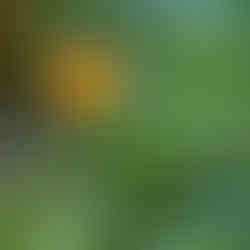We have ducklings!
- Clare
- Apr 18, 2020
- 6 min read
These little beauties hatched over the Easter weekend. They spend a lot of time in our garden and come to our window several times daily looking for food (with the appropriate social distancing of course!). I find that I am spending too much time chasing male ducks away from the exhausted mum as she tries to protect her little ones (I think there are sixteen!). I hope a good proportion of them survive.
It's amazing how quickly things can appear in the garden. The blossom on several of our trees also seems to have burst from bare branches overnight:
Unfortunately, our two white cherry trees did not hold on to their flowers for long as a day of relatively strong wind dispersed the blossom over our garden. However, it did leave the loveliest of carpets!
I also had to include the following picture of an apple tree which is situated in the allotment next to ours. It is glorious! The bees are buzzing all over it (there are hives on the allotments) and I never realised apple blossom could smell so sweet.
Our countryside is steeped in traditions, legends and festivals and it's unsurprising that the Nation's favourite fruit should feature in many of these. For example, the name of the legendary island of Avalon from Arthurian legend is believed to derive from the ancient Welsh for "apple tree". In Cornwall, Allan apples may be presented as good luck charms on the Feast of Saint Allan (Allantide) and orchard "Wassailing" (from the Anglo-Saxon Waes Hael, meaning "be in good health") is another tradition that is still carried out in some U.K. counties on Twelfth Night (5th January or 17th January, depending on whether the old 'Julian' or current 'Gregorian' calendar is being used). The precise nature of this "blessing" of apple trees varies between counties but generally includes drinking and singing to the health of the trees in the hope that they will provide a good harvest later in the year. Often, pieces of cider soaked toast are placed in the branches of the tree as an offering, and quantities of cider are sometimes sprinkled around the roots. Pots and pans may also be banged loudly (or shotguns fired) to awaken the sleeping tree spirits and frighten off any demons, and traditional songs (such as the following) may be sung:
Old apple tree we wassail thee And hoping thou will bear For the Lord doth know where we shall be 'Til apples come another year
For to bear well and to bloom well So merry let us be Let every man take off his hat And shout to the old apple tree
Old apple tree we wassail thee And hoping thou will bear Hat fulls, cap fulls, three bushel bag fulls And a little heap under the stairs.
Whilst these traditions are seen as a bit of fun nowadays and as an excuse to celebrate with friends, they also represent a connection with the countryside and an act of remembering our ancestors.

Considering the importance of the apple throughout our history, it is saddening to read that approximately 60 per cent of British apple orchards have disappeared since 1970 due to the increased pressures on agriculture and the propensity of some supermarkets to stock produce that is not home-grown. As a consequence of this, it has been estimated that close to a staggering three thousand varieties of apples and pears have been lost. Furthermore, as the relationship between apple trees and honey bees is such a close one, this will also surely have a huge impact on our bee population.
Whilst we do not have any fruit trees on our own allotment, we were very grateful to be given a good quantity of strawberry plants and raspberry canes by someone who was thinning out a neighbouring patch. I love this about allotments. Not only are they lovely, peaceful places, they are full of likeminded people who always seem to be so generous with their produce and experience. The beans we planted previously have also pushed their way through the earth and we have added four young corn plants to the mix. Back in our own garden, we also have carrot, beetroot and courgette seedlings, though no sign of our potatoes yet.
In addition to our vegetables, more flowers are appearing. The bluebells have emerged and it is unfortunate that we won't be able to visit any bluebell woods this year as they are one of my favourite flowers. Our rosemary and flowering currant are also flowering well and the prickly berberis is displaying its little yellow flowers (it's amazing how everything suddenly seems to burst into life). I have also finally got round to sowing my wildflower seeds, though I am unsure whether there will be any left to germinate as the pigeons, cats and ducks suddenly seem to be taking a real interest in my front border!
Thankfully, the Easter Bunny was able to visit us last weekend and the children loved finding their eggs in the garden. In the hope that the good weather will continue, I have included another small selection of child-friendly activities below:
1. Camp out all night and go stargazing! - We tried this last week and the children loved it so much that they wanted to create a den in their bedroom in order to "camp" inside on the following night!
If it's not too cloudy and the street lights aren't too bright where you live, there are a number of websites that you can use to determine what may be visible on a given night and/or to help identify different constellations. A few are provided below:
https://spotthestation.nasa.gov/ may be used to determine when the International Space Station will be passing overhead. On a cloudless night, it can be clearly seen as a bright dot passing relatively quickly across the sky.
BBC Stargazing Live has also put together this downloadable activity pack which accompanies the BBC2 programme:
Short video presentations and some great photographs can also be seen at:
The Jodrell Bank website also has a number of learning resources that may be useful:
http://www.jb.man.ac.uk/astronomy/nightsky/ is updated monthly and provides a list of what may be observed in the night sky each month. There are also a number of primary school and nursery level worksheets under the "worksheets" sections at:
Finally, an interactive sky chart for the U.K. can be found at:
2. Go on a night time garden safari - Related to the above, if you don't fancy staying out all night, grab a torch and go hunting for some of the nocturnal creatures that visit your garden when its dark. From foxes and hedgehogs, to bats, moths and owls, you may be surprised at what you find. Whilst camping out last week, we found a hedgehog snuffling around the garden and heard owls hooting (I have previously seen barn owls in the vicinity). We have also seen bats on several occasions and (unfortunately) rats.
If your patience is not being rewarded, you could encourage moths to come to you by using torchlight to illuminate a light-coloured sheet hung on a washing line (preferably away from any other artificial light source). Moths will be attracted to the light and land on the sheet. You could make the experiment more "scientific" by varying the colour of the light, the time of night, or recording changes in temperature.
If it's too cold, or bedtime intervenes, you could also set up a sand "trap" to capture any tracks that visiting wildlife may leave behind. This can be done simply by adding about a 2 inch/5 centimetre depth of moist sand to a plastic tray (such as the plastic plant trays found in garden centres). Smooth off the top surface and place food and water in a shallow dish in the centre of the tray. Check the sand in the morning and, if you are lucky, you may find that a visiting bird or animal has left its tracks behind. Tinned cat food (not fish based) is a tempting treat for hedgehogs, though may also attract any neighbourhood cats in the vicinity!
3. Press flowers - Collect a variety of pretty flowers and leaves from the garden, ideally choosing flowers that aren't too "bulky" (daisies and violets are ideal) and trying to avoid picking flowers that are wet from morning dew or rain. Place the flowers and leaves between layers of paper towel or parchment paper, making sure they are not touching each other, and "press" under three or four heavy books. Leave until the flowers have completely dried out (ideally 1-2 weeks, though this depends on the type of flower you are using and the project you are aiming for!). We just left our flowers for a couple of days and then used them to make a pretty garden picture.

4. Make wooden wind chimes - This is a fun project for younger children. Collect about six sticks of similar length from around the garden and paint with bright rainbow colours. Tie the painted sticks to a longer straight stick, the branch of a tree or make a circular support from a flexible twig such as a willow branch. Leave the "chimes" to blow in the wind.
5. Have a picnic in the garden - Everybody loves a picnic! If you can't get outside, you could always have one on the carpet by a window or decorate the room with floral pictures.

































Comments